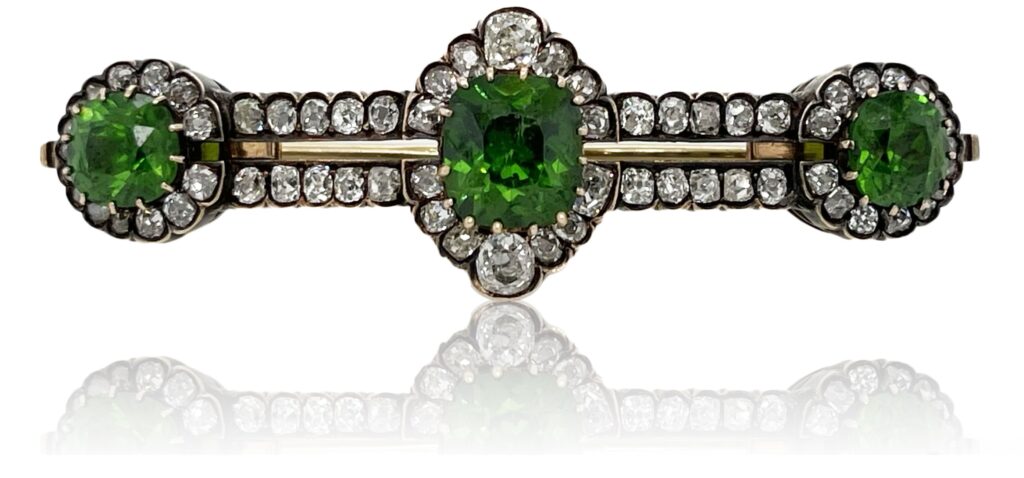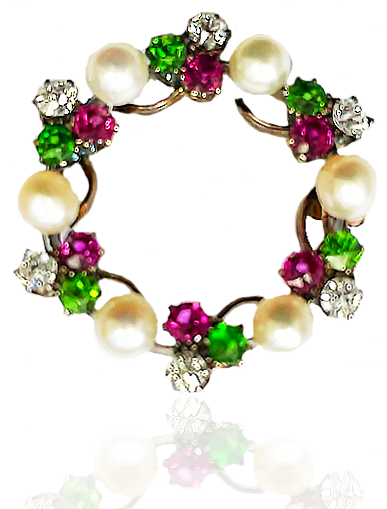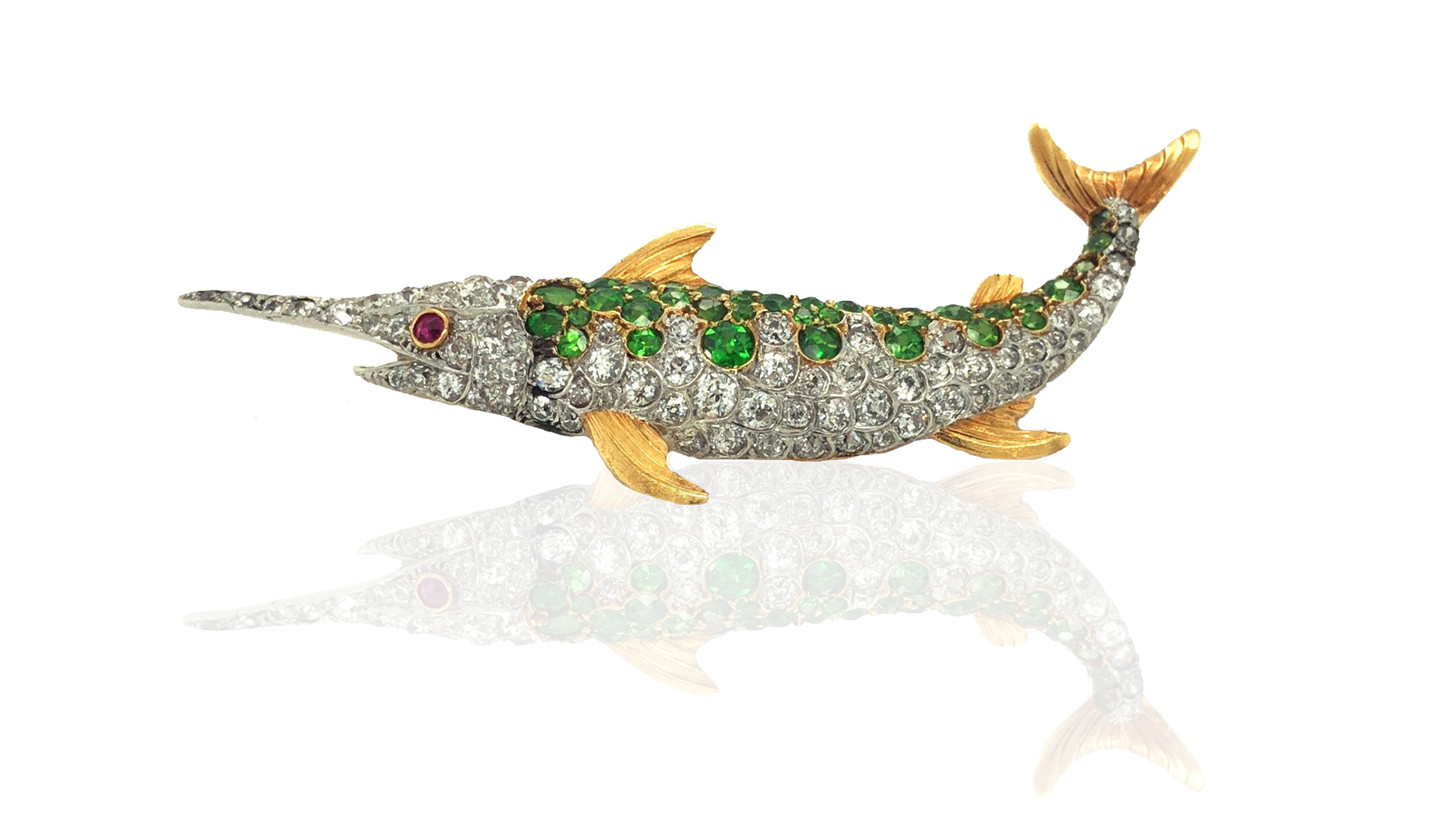With a green color evocative of emerald and the fire of a diamond, demantoid garnets are a very rare gemstone that is sometimes found in antique and vintage jewelry made during the Belle Epoque, (late 1800’s and early 1900s, approximately 1890 -1910).
Demantoid garnets were first found in Russia in the Ural Mountains in the mid-1800s – sources vary as to the exact timing, but seem to agree that the discovery was sometime between 1852 and 1854. These stones are the green variety of the mineral species andradite, which is part of the garnet family. They get their color from the presence of chromium, which can range from a lighter yellowish green to a deep, rich green; the stones with more yellow will have traces of iron.
Identifying Demantoid Garnet
Initially, when demantoid garnet was discovered, it was thought to be peridot, because of its color. However, in 1864, a mineralogist from Finland, Nil Von Nordensheld, identified the gems as a new stone. Prior to being named, given their intense fire that is similar to that of a diamond, demantoids were sometimes called “green diamonds”. Nordensheld proposed the name demantoid because it means diamond-like and the name was adopted.

It wasn’t long before the gems found their way into the Russian Royal court where demantoid garnets quickly became a favorite stone and jeweler to the Czars, Peter Carl Fabergé showcased them in his designs. At the time Russia was the only country that mined demantoid garnets so their use was confined mostly to the Czars and others in the wealthy upper-echelons of society. Slowly the green gems made their way into the rest of Europe where they caught the eye of King Edward VII. Renowned for enjoying a good party and a good time, King Edward was well known for a love of luxury, opulence and jewelry. And it turned out that green was one of his favorite colors. He took a liking to demantoid garnet, which in turn made it a popular choice for Edwardian era jewelry.
Even though demantoid garnet was favored in Edwardian jewelry, there was limited supply, so it is still unusual to find jewelry showcasing those gems. It’s also a gemstone that comes in smaller sizes, to find a faceted stone of 1-carat or larger is extremely rare. As mentioned earlier, the gems tend to have a lot of fire, especially in the lighter colors, the darker stones mute the fire aspects of demantoid garnets, but it’s still visible.
Demantoid garnets almost always have inclusions, but in the case of these gems an inclusion can be an asset. Collectors are particularly intrigued by a particular type of inclusion called a “horsetail”. The inclusions are wavy, golden and fibrous. They start at a central point in the stone and then flare out like a horsetail. It’s a feature that is highly desired by collectors and can increase the price of the gem. While the horsetail inclusion is frequently found in demantoid garnets, it isn’t found in all of them.
Scarce Supply

Russia was at one time the only source of demantoid garnets and because there was only one source supply was scarce. It became even scanter after mining for demantoid garnets stopped altogether with the Bolshevik Revolution of 1917. After the revolution and the fall of the monarchy and aristocracy combined with the rise of communism, displays of wealth and opulence, such as wearing jewelry, were frowned upon and there was not a move back to reopening the mines.
In the late 1990s and early aughts, demantoid garnets were found in Namibia and Madagascar. The gems have also been found in the Democratic Republic of Congo, Iran, Mexico, Pakistan, South Korea, Sri Lanka and in the United States. Despite a list of several countries mining this fiery green gem, it still remains rare, especially in sizes over 1-carat. Much of the demantoid garnet that is available today tends to be in antique jewelry. If you’re lucky enough to come across one of these rare gemstones, you may want to consider adding it to your collection.
Featured image (top of page): Platinum, gold and diamond swordfish brooch is decorated with demantoid garnet accents and a ruby eye, circa 1900, courtesy G. Torroni S.A.
Authored by Amber Michelle
